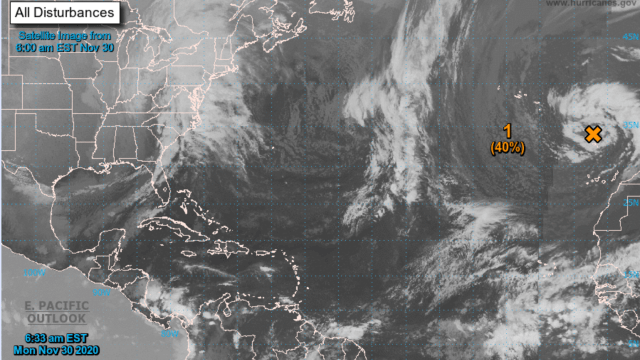Atlantic hurricane season began early, ran wild all year, and is now, officially, at an end. Just don’t tell that to the actual Atlantic, which may well churn out another cyclone.
In a trash year, Atlantic hurricane season has been its own particular dumpster fire. It set the record for the number of named storms, a record number of U.S. landfalls, some of the most rapidly intensifying hurricanes ever observed, freak out-of-season storms, a weirdo storm that made it to Lake Superior, six major hurricanes, and widespread destruction from Central America to the Gulf Coast.
Researchers knew going into hurricane season that it would likely be an active one. The atmosphere featured slack winds and cooler-than-normal waters in the eastern tropical Pacific that eventually became a La Nina helped keep them that way. Meanwhile, large portions of the Atlantic basin — which also includes the Caribbean Sea and the Gulf of Mexico — were warmer than normal. Outside a blast of dust from the Sahara in June, all systems were ideal for cyclones to spin up and strengthen all season — and spin up they did.
A record 31 named storms formed in 2020, exhausting the normal list of names and forcing forecasters to dip into the Greek alphabet for only the second time on record. The previous time was 2005, the former record holder for most active season. Among the most notable storms to punctuate the season were Hurricane Laura, which tied the record for strongest storm to ever make landfall in Louisiana. Hurricane Delta made landfall six weeks later just to the east of where Laura did, compounding suffering. They were among a dozen storms that made landfall in the U.S.
Consecutive storms also hit Guatemala in November, doing even more damage. Hurricane Eta and Hurricane Iota were both beastly storms for any time of hurricane season, but particularly rarefied as November storms. The latter is the strongest November hurricane ever seen in the Atlantic. Both brought punishing rain, wind, and storm surge to Guatemala and other parts of Central America weeks apart.
The list goes on, but we don’t really need to rehash all 31 storms, do we? That’s especially true because in classic 2020 fashion, hurricane season officially ends on Monday, even as the U.S. National Hurricane Centre issued a warning for a low-pressure system organising off the coast of Africa. There’s a 40% chance it becomes a subtropical cyclone, a spinning storm that mixes elements of hurricanes and storms like nor’easters. Regardless of the classification or if it gets a name (it would be Subtropical Storm Kappa if it does), the system will bring gusty winds and heavy rains to the Madeira Islands, located about 935 kilometres west of Morocco.
While no studies have yet dived into it, many of the trends we saw — rapidly intensifying storms, abnormally hot oceans, storms with exceptionally heavy rainfall — are all hallmarks of how carbon pollution is altering our weather. The impacts we saw on the ground also reflect how climate change intersects with inequality, foisting the worst impacts of the disasters on places and people already overburdened with suffering. And while it’s officially over, it may still yet teach us a few things.
